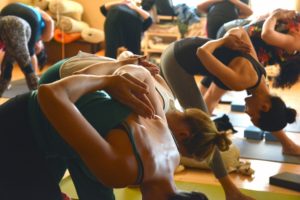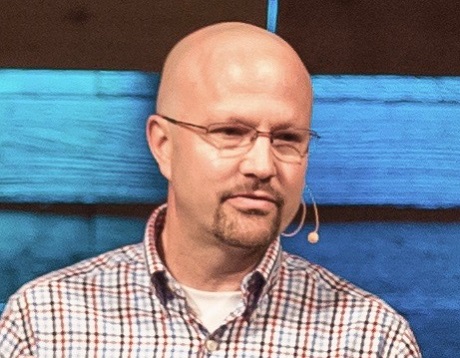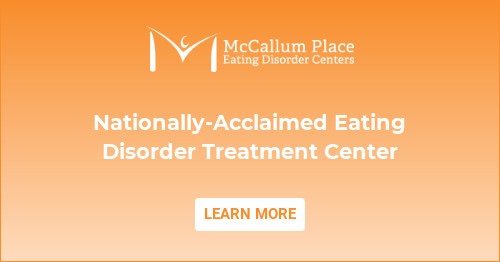- Calls to this hotline are currently being directed to Within Health, Fay or Eating Disorder Solutions
- Representatives are standing by 24/7 to help answer your questions
- All calls are confidential and HIPAA compliant
- There is no obligation or cost to call
- Eating Disorder Hope does not receive any commissions or fees dependent upon which provider you select
- Additional treatment providers are located on our directory or samhsa.gov
Body Views – Exploring How Various Views of the Body Contribute to and Heal Body Hatred – PART IV

In part 4 of this 4 part series, we combine all of the historical and cultural contexts of the first three parts to discuss how this can all be used to help individuals learn their body view and use that for eating disorder recovery.
Our Cultural Legacy
Something that is very telling of our society is when people take selfies of themselves in the gym.
These days, people don’t just workout for themselves anymore, they workout for social media and for everyone to see the progress that they are making or motivate themselves to look better the next time.
Of all the ideals we have worked through, there are some we still hold onto today in our culture. One of these is the survival of the fittest.
We see this in our culture right now, as our clients come in with this idea that those who have the “best” bodies have low weight or self-control around diets or exercise are more valued and are the fittest and strongest.
Another view that I think still impacts clients is the idea that the body is unnecessary or evil. I have had conversations with clients about this very thing, feeling like it is evil or doesn’t deserve to be cared for.
This is often also combined with a history of trauma, which sometimes makes people think or feel their body is evil and want to get rid of it or disappear.
Also, the idea that there is no soul and only a body and once we die, we’re dead, can really impact someone unless they find other ways to develop a sense of purpose and meaning.
Finally, just like the Victorians, we are obsessed with health, even though it looks different now. Now, people look at the latest diet, fad, or detox.
Views That We Have Lost
Of all the beliefs we have covered in this series, I also think that there are those we have lost. Many Christian clients do not understand that in early Christian teachings that the body is good and some have embraced it as evil.
Our culture, as a whole, looks at the body as good but only if it checks the right boxes as far as weight, size, appearance, etc. There is very little belief that the body is good simply because it exists or because it offers you the opportunity to interact with the world and others. There is a lot of value of that which we have lost.
We have also lost the view that “I am more than my body.” So, Christianity, Buddhism, Islam, they all said one way or another that the body is good and I’m more than my body, that it is part of me but does not define me. I believe that we have lost some of that.
We have also lost the idea of moderation in all things in our culture, and our culture really struggles with that. Out of all these views, there are things that are positive and negative. Some create shame. Some create freedom.
The Lived & Corporeal Body
I like to discuss Thomas Fuchs work here. He is a Psychology professor and studies phenomenology at the University of Heidelberg in Germany. He defines two ways of viewing the body, one is the lived body, and one is the corporeal body.
The lived body is the experience we have of the body when I act through my body, perceive and exist through it without explicitly reflecting on it. It is my relation to the world as mediated and lived by the body.
 In other words, when I am walking with my dog, I’m not thinking about my body, I’m just living in it. I’m noticing the smells of winter. I’m noticing the chill in the air. These are lived body experiences.
In other words, when I am walking with my dog, I’m not thinking about my body, I’m just living in it. I’m noticing the smells of winter. I’m noticing the chill in the air. These are lived body experiences.
The lived body experience decreases shame, guilt, self-awareness, awareness of size and shape. We want to be moving clients toward the lived body experience.
This is less about loving the body and more about being self-forgetful, in the sense that “I’m not going to think about my body all the time. I’m not obsessed with it. I’m simply living my life in it.”
The second is the corporeal body. This Fuchs defines as the anatomical object of physiology and medicine which can be observed, grasped, and, even, manipulated.
This is seeing our body as an object. Fuchs basically says that we experience shame, fear, guilt, etc. when we experience the body as a corporeal body.
As an example, consider those slave traders that brought over Africans saw Africans not as humans but as bodies. They objectified these humans and their bodies and, as such, felt it was their right to buy and sell them and do horrific things to them.
Experiencing their bodies as only bodies and objectifying them bred hatred. An example of these two co-existing is an individual playing basketball.
Maybe they are running down the court, in the lived body experience only thinking about getting the pass and taking the shot. Then, the basketball hits their finger and their look at it and realize it is not moving the way they’d like and looks like an object that is broken, switching from the lived experience to the corporeal.
Doing this brings a lot of questions through the corporal such as “is my body good?” “is it doing what it is supposed to do?” This may result in feeling embarrassed about it or feeling afraid.
We see this in our culture with the male gaze that women experience, turning the lived body into a corporal body and an object that they judge. This makes the women then view their body as different, as something that is judged as opposed to what they inhabit and live life through.
Some of the questions we can ask our clients, then, are about what their worldview is, what is their body view, what is their faith background and life experience.
Has my life encouraged a lived body experience or a corporeal body experience?
Ask clients about their spiritual history, about their experiences in the church or with their faith.
Ask about their educational history, what do they believe about the body and spirituality and evolution and all of these things.
Activities
Consider doing a free-association activity with them such as asking them to write the word “body” on the top and then draw a line down the middle. On the left-hand side, they will free-associate at least a dozen words of what comes to mind when they see the word body. In the right-hand column, have them write the feelings they have when you see the word “body.”
You can learn a lot from this, and it opens up doors for good therapy discussions.
Finally, do the “Fantasy Exercise” with clients. Ask a client to imagine a daydream or fantasize about a situation in which they inhabit their ideal body.
 Then, I say, “okay, imagine that body and put it into a fantasy or daydream of what would be an ideal situation in which you are inhabiting that body.” Ask where they are in that body or what they are doing in that body.
Then, I say, “okay, imagine that body and put it into a fantasy or daydream of what would be an ideal situation in which you are inhabiting that body.” Ask where they are in that body or what they are doing in that body.
Then, I ask how they are feeling in that ideal body in that ideal situation. For example, some may say their body and that they are walking on the beach in a bikini.
They may say, “I’m feeling strong” or, “I’m just enjoying the waves.” Those different answers have different implications for me to learn what the ideal body means to them.
I may then ask something like “who is noticing you, is anyone noticing you?” I then have them describe who it is and what they imagine them thinking.
That is a big high-level picture of that exercise that you can do with clients to begin to understand their personal body view and how that impacts them, their body, or their eating
disorder behaviors.
Please See
Body Views: Exploring How Various Views of the Body Contribute to and Heal Body Hatred – Part I
Body Views: Exploring How Various Views of the Body Contribute to and Heal Body Hatred – Part II
Body Views: Exploring How Various Views of the Body Contribute to and Heal Body Hatred – Part III
Source:
Virtual Presentation by Travis Stewart, LPC, NCC, MATS is the Director of Marketing & Business Development at McCallum Place Eating Disorder Centers in the December 8, 2018, Eating Disorder Hope Virtual Conference III: Blasting Through Bias: A Deep Dive into Underserved Populations and Global Issues 2018
Please visit the Virtual Conference page for other presentations.
About the Author:
 Travis Stewart, LPC, NCC, MATS is the Director of Marketing & Business Development at McCallum Place Eating Disorder Centers. He has worked in the field of eating disorders since 2003 in both clinical and marketing roles at every level of care. He brings a unique blend of clinical expertise and communication skills to his role with McCallum Place. He is passionate about connecting people to resources and experiences that are transformative and healing.
Travis Stewart, LPC, NCC, MATS is the Director of Marketing & Business Development at McCallum Place Eating Disorder Centers. He has worked in the field of eating disorders since 2003 in both clinical and marketing roles at every level of care. He brings a unique blend of clinical expertise and communication skills to his role with McCallum Place. He is passionate about connecting people to resources and experiences that are transformative and healing.
Travis graduated from the University of Nebraska in 1991 with a degree in advertising and immediately began working with the international ministry of The Navigators, mentoring students. After 8 years, his desire to better understand how people change and heal led to obtaining a Master of Arts in Counseling (2001) and a Master of Arts in Theological Studies (2003) from Covenant Seminary in St. Louis, Missouri where he now lives with his family. Learn More About Travis Stewart, LPC, NCC, MATS
About the Transcript Editor:

Margot Rittenhouse, MS, NCC, PLPC is a therapist who is passionate about providing mental health support to all in need and has worked with clients with substance abuse issues, eating disorders, domestic violence victims, and offenders, and severely mentally ill youth.
As a freelance writer for Eating Disorder and Addiction Hope and a mentor with MentorConnect, Margot is a passionate eating disorder advocate, committed to de-stigmatizing these illnesses while showing support for those struggling through mentoring, writing, and volunteering. Margot has a Master’s of Science in Clinical Mental Health Counseling from Johns Hopkins University.
The opinions and views of our guest contributors are shared to provide a broad perspective of eating disorders. These are not necessarily the views of Eating Disorder Hope, but an effort to offer a discussion of various issues by different concerned individuals.
We at Eating Disorder Hope understand that eating disorders result from a combination of environmental and genetic factors. If you or a loved one are suffering from an eating disorder, please know that there is hope for you, and seek immediate professional help.
Published on March 7, 2019.
Reviewed & Approved on March 7, 2019, by Jacquelyn Ekern MS, LPC
Published on EatingDisorderHope.com

The EatingDisorderHope.com editorial team comprises experienced writers, editors, and medical reviewers specializing in eating disorders, treatment, and mental and behavioral health.


